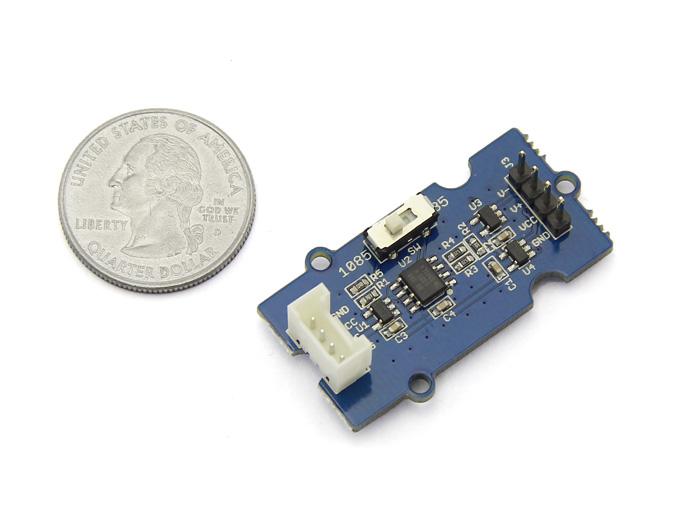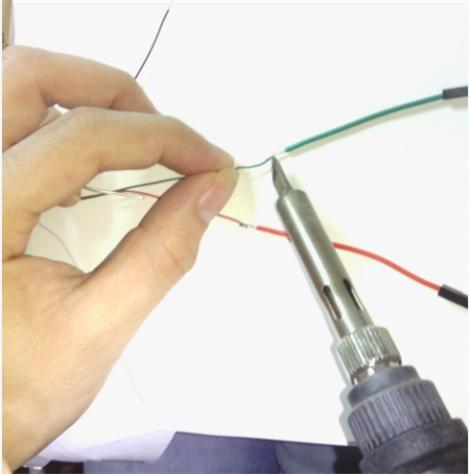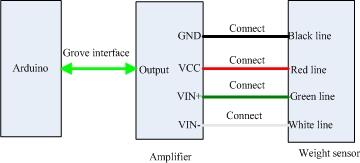
This Grove is designed for precise differential-input amplification. Input the differential signals of your sensor to this module through the male pins, then your Arduino will get a precisely amplified output from the Grove interface. The gain scale factor is selectable. You can get a 35 times or 1085 times amplification via a switch on the board. [SKU:COM10221P]

| Item | Min | Typical | Max | Unit | ||
|---|---|---|---|---|---|---|
| Operating Voltage | 2.7 | 5.0 | 5.5 | VDC | ||
| Input Voltage |
0.1 | \ | (Vcc-0.8)/Gain | mV | ||
| Output Voltage | 0 | \ | Vcc-0.80 | mV | ||
| Gain | Select 35 | / | 35 | / | / | |
| Select 1085 | / | 1085 | / | |||
1. Sensor Choosing
The amplifier can turn signals in mA scale up to A scale. Before using it, make sure the output range of your sensor is in mA scale. For example, Weight Sensor is one of them.
2. Connector Reforming
To pair the weight sensor up with the male pins on the amplifier, female connectors need to be soldered on its wires.

3. Hardware Hookup
Connect the weight sensor to the amplifier as the picture depicts below.

4. Measurement
Copy and paste the demo code below to Arduino IDE and upload it.
void setup()
{
Serial.begin(9600);
Serial.println("start");
}
void loop()
{
int i;
int value;
float V,Vo;
float Sum=0;
for(i=0;i<10;i++)
{
value=analogRead(4);
V=value*5.00/1023;
Sum+=V;
delay(10);
}
Vo=Sum/10;
Serial.print("Output score:");
Serial.println(Vo);
delay(1000);
}
You can view the amplified signals via serial monitor. For the value of the input signal, you need to use the multimeter to measure the voltage difference between VIN+ and VIN-.
v1.2 Eagle File
v1.2 Schematic
Copyright (c) 2008-2016 Seeed Development Limited (www.seeedstudio.com / www.seeed.cc)